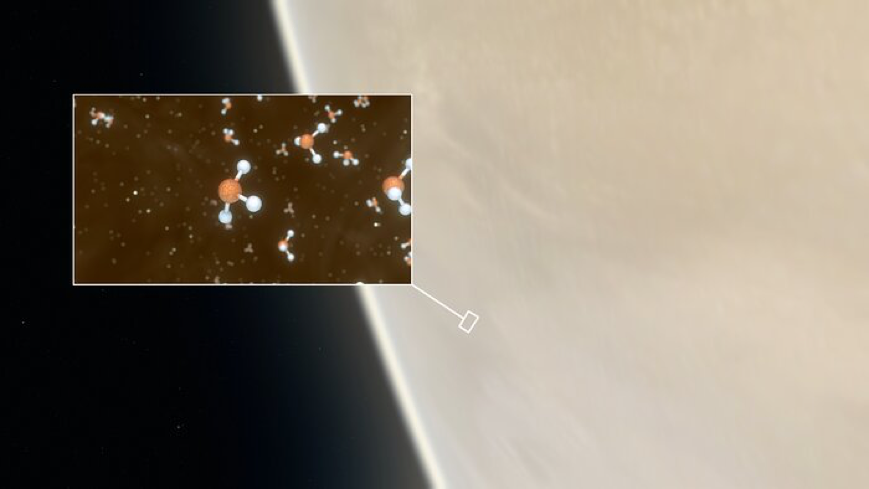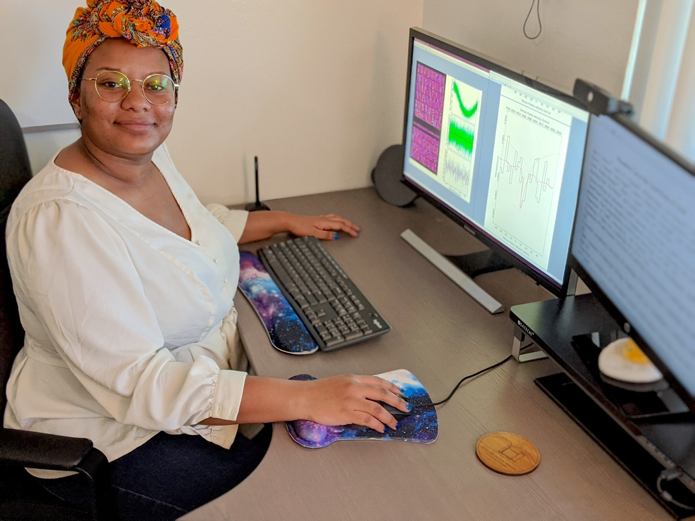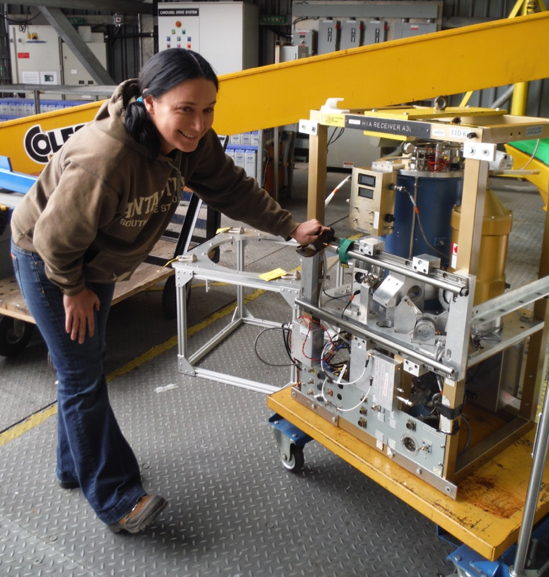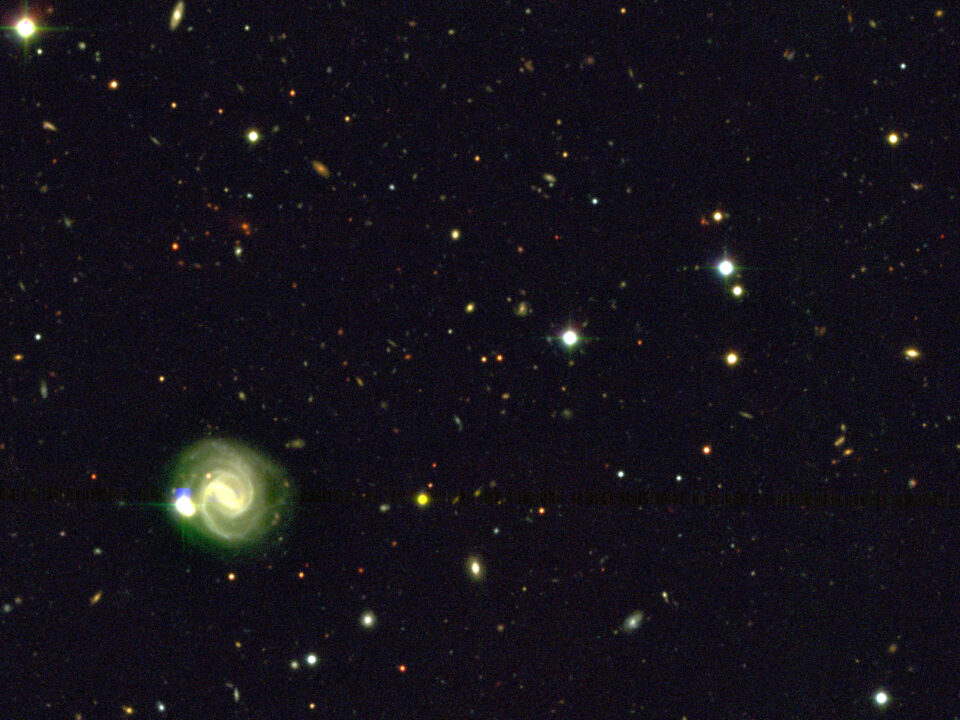JCMT finds hints of life on Venus

The Science Explained
September 14, 2020
A White Dwarf’s Surprise Planetary Companion
September 17, 2020An international team of researchers using the JCMT in Hawaii have discovered the biomarker phosphine in the cloud of Venus. Follow up observations from ALMA confirmed the detection of phosphine in the mid-latitude cloud decks on Venus, where pressures and temperatures are more conducive to life on what is typically thought of as an inhospitable rocky planet. On the Earth, phosphine is only known to be produced by industrial processes or by microbial life that thrives in oxygen-free environments. After detailed analysis the team concluded that no known natural processes could produce phosphine in the amounts detected, as a result the team are left with the explanation that the phosphine is tracing microbial life on Venus.
The research was lead by Jane Greaves of Cardiff University, UK and published by the team in the science journal Nature. A copy of the Press Release can be found here: English version, ‘Ōlelo Hawaii.
Dr. Larry Kimura, Associate Professor University of Hawaii, Hilo in the Ka Haka ʻUla O Keʻelikōlani, College of Hawaiian Language was asked to provide assistance with the translation of the news of the detection of phosphine into ʻōlelo Hawaiʻi. The translation required Dr Kimura to create a new word to describe the possibility of the detection of life. In the process Makaola – a detection of life – was formed.
Maka is the basic word for “eye” and in Hawaiian the nuances or other meanings go on; kūmaka-visible, seen; makaʻala-alert, watchful; makamua-the very first; etc. Also as used in the Kumulipo when we see “maka liʻi” or tiny eyes, those maka are tiny dots so other meanings for maka are a point of beginning, or like the tip of a pen or spear. It is the word we use to mean to begin with the causative marker “hoʻo” or hoʻomaka. Ola is the word for life, alive, living, and support.
-
 Artistic impression of Venus depicting a representation of phosphine molecule shown in the inset. The molecules were detected in the Venusian high clouds in data from the James Clerk Maxwell Telescope and the Atacama Large Millimeter/submillimeter Array. Astronomers have speculated for decades that life could exist in Venus’s high clouds. The detection of phosphine could point to such extra-terrestrial “aerial” life. Image credit: ESO/M. Kornmesser/L. Calçada & NASA/JPL/Caltech.
Artistic impression of Venus depicting a representation of phosphine molecule shown in the inset. The molecules were detected in the Venusian high clouds in data from the James Clerk Maxwell Telescope and the Atacama Large Millimeter/submillimeter Array. Astronomers have speculated for decades that life could exist in Venus’s high clouds. The detection of phosphine could point to such extra-terrestrial “aerial” life. Image credit: ESO/M. Kornmesser/L. Calçada & NASA/JPL/Caltech. -
 JCMT open for morning observing with the shadow of Maunakea evident behind as it rises over Hualālai. JCMT is able to observe during the daytime as it operates at sub-millimeter wavelengths. Image credit: Tom Kerr, UKIRT.
JCMT open for morning observing with the shadow of Maunakea evident behind as it rises over Hualālai. JCMT is able to observe during the daytime as it operates at sub-millimeter wavelengths. Image credit: Tom Kerr, UKIRT. -
 The 19 authors who contributed to the first detection of phosphine on Venus. From right to left Top row: Jane Greaves, Helen Fraser, Annabel Cartwright, alma e Sousa-Silva, Sara Seager, Middle top row: Hideo Segawa, Emily Drabek-Maunder, Janusz Petkowski, Paul Rimmer. Middle bottom row: Zhuchang Zhan, William Bains, Ingo Mueller Wodarg, Sukrit Ranjan. Bottom row: Per Friberg, Anita Richards, Jim Hoge, E’Lisa Lee, Iain Coulson, David Clements.
The 19 authors who contributed to the first detection of phosphine on Venus. From right to left Top row: Jane Greaves, Helen Fraser, Annabel Cartwright, alma e Sousa-Silva, Sara Seager, Middle top row: Hideo Segawa, Emily Drabek-Maunder, Janusz Petkowski, Paul Rimmer. Middle bottom row: Zhuchang Zhan, William Bains, Ingo Mueller Wodarg, Sukrit Ranjan. Bottom row: Per Friberg, Anita Richards, Jim Hoge, E’Lisa Lee, Iain Coulson, David Clements. -
 E’Lisa Lee took some of the JCMT data during her time working as a part-time JCMT telescope operator. E’Lisa, who is a UH Hilo Astronomy Graduate, is currently studying for her Master’s degree in physics at Fresno State University. Image Credit: E’Lisa Lee.
E’Lisa Lee took some of the JCMT data during her time working as a part-time JCMT telescope operator. E’Lisa, who is a UH Hilo Astronomy Graduate, is currently studying for her Master’s degree in physics at Fresno State University. Image Credit: E’Lisa Lee. -
 JCMT Deputy Director, Jessica Dempsey stands beside the now retired instrument, RxA3m, that made this first detection of phosphine on Venus. The instrument has since been replaced by a more powerful instrument called Nāmakanui. Image Credit: Harriet Parsons
JCMT Deputy Director, Jessica Dempsey stands beside the now retired instrument, RxA3m, that made this first detection of phosphine on Venus. The instrument has since been replaced by a more powerful instrument called Nāmakanui. Image Credit: Harriet Parsons
Image Downloads
- Artistic impression of Venus depicting a representation of phosphine molecule shown in the inset.
- JCMT open for morning observing with the shadow of Maunakea evident behind as it rises over Hualālai.
- The 19 authors who contributed to the first detection of phosphine on Venus.
- E’Lisa Lee took some of the JCMT data during her time working as a part-time JCMT telescope operator.
- JCMT Deputy Director, Jessica Dempsey stands beside the now retired instrument, RxA3m, that made this first detection of phosphine on Venus.



